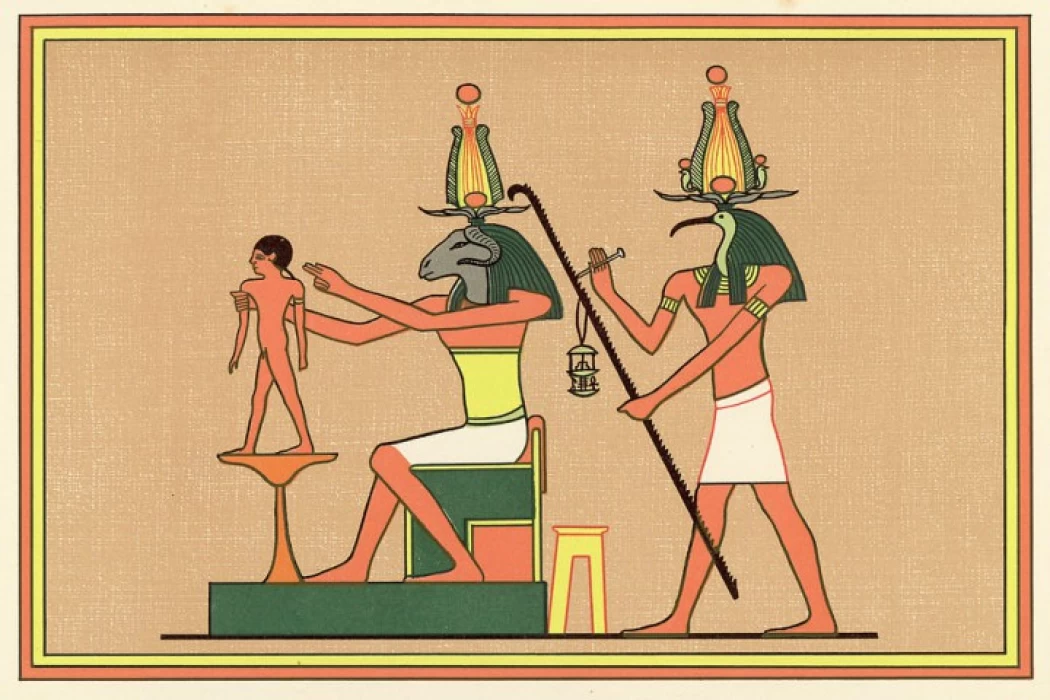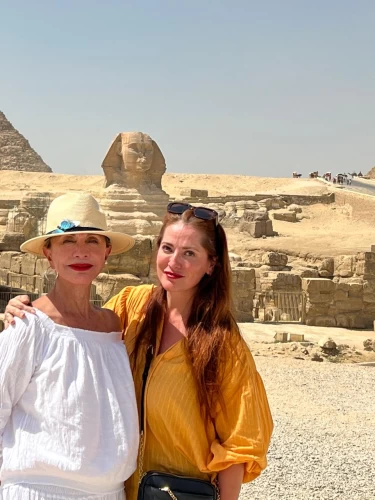
God Khnum | God of the Waters
God Khnum
Esta divindade era conhecida como o deus das águas que circulavam no mundo inferior, desta forma, quando o sol naufragou na escuridão da noite, Khnum juntou-se a ela inconscientemente.
God of the Waters
Entre as funções mais notáveis deste deus na religião egípcia, está a de criar seres vivos, homens e deuses, graças à sua roda de oleiro, um lugar de onde muitos afirmaram que o ovo primordial tinha nascido.
Vale a pena mencionar que com a função de oleiro, com a qual criou pessoas ao mesmo tempo que o seu Ka, foi-lhe dado o nome de "O pai dos pais e a mãe das mães" de tal forma que Khnum significa literalmente "o modelador".
Da mesma forma, contam as lendas mais antigas, que no início dos tempos Khnum se dedicou a criar cada homem e cada mulher separadamente, mas um dia, Khnum acorda cansado de fazer esta tarefa, por isso sem pensar que partiu o seu oleiro de torno, introduzindo assim uma parte diferente em cada mulher, pelo que a cada uma delas foi dado o papel de dar à luz as gerações seguintes.
Khnum é representado com um carneiro na cabeça, a sua cabeça de homem, uma coroa de Atef, carregava um ceptro de Ankh-sign, pelo que este deus faz parte da tríade Esna, com Satis.
Gostaria de viver uma viagem através da cultura e mitologia egípcia antiga? pode fazê-lo acontecer e passar um dia a visitar Abydos, Giza, Luxor, Assuão para ver os túmulos dos faraós adornados com cenas muito claras, detalhadas e belamente pintadas das várias divindades do antigo Egipto, bem como muitos outros locais, cidades, aventuras e coisas para fazer no Cairo, pode tentar reservar um dos nossos tours ao Egipto e pacotes de viagens ao Egito muitos grupos privados de excursões guiadas de um dia no Cairo a partir do aeroporto e tours de um dia no Egipto para explorar a capital do Egipto, Cairo pode verificar muitos dos itinerários do Egipto ou fazer um dos nossos tours de um dia completo no Cairo como
God Khnum
This deity was known as the god of the waters that circulated in the lower world, in this way, when the sun was shipwrecked in the darkness of the night, Khnum unconsciously joined it.
The ram god, whose name is derived from the verb "khnem" meaning "to create," indicating that he was a creator from the beginning. Perhaps because of his creative ability, and because the phonetic connotation of the ram (bA) matches the word "ba" (meaning: spirit), he was referred to by the title (bA Ra).
Among the most outstanding functions of this god in Egyptian religion, is that of creating living beings, men, and gods thanks to his potter's wheel, a place from which many claimed that the primordial egg had been born.
It is worth mentioning that with the pottery function, with which he created people at the same time as his Ka, he was given the name "The father of fathers and mother of mothers" in such a way that Khnum means literally "the modeler".
In the same way, the oldest legends tell, that at the beginning of time, Khnum was dedicated to creating each man and each woman separately, but one day, Khnum woke up tired of doing this task, so without thinking he broke his lathe potter, thus introducing a different part of it in each woman, so each of them was given the role of giving birth to the next generations.
His Association with Other Deities. He was associated with the goddesses Menhet and Neith at the temple of Esna.
Khnum, along with the goddesses Satet and Anqet, formed the First Cataract triad at Elephantine. He was also united at Elephantine with the gods Shu and Horus. On the other hand, the Greeks equated him with the god Amun at Thebes, perhaps because both were associated with the ram.
Elephantine Island and the region surrounding the Aswan Falls were thought to be protected by Khnum. "Lord of the Falls" was another name for him in the Old Kingdom. During the New Kingdom, he and his wife, Satis, and their daughter, Anukis, formed what is known as the "Elephantine Triad." He was worshipped in many areas of Upper Egypt and Nubia, but his worship declined in northern Egypt and the Delta. Among his most important worship sites were Elephantine Island, Philae, Esna, Edfu, Asyut, Kom Ombo, and Mendes. Since the First Dynasty, the belief in sacred rams has been known.
Esna Temple
His temple at Esna is his best-preserved temple, and its texts provide us with a wealth of information about this deity and his worship.
The Greco-Roman Temple of Khnum in Esna was built during the reign of the Roman Emperor Claudius and dedicated to the worship of the ram-headed creator god. All that remains of the temple is the hall, whose ceiling rests on columns. The ceiling, supported by 24 columns, is decorated with images depicting rural scenes and hymns to the god Khnum. This temple was discovered in the 1840s. You can see the carved plant motifs and images of Roman celestial beings, along with hieroglyphic inscriptions representing the rituals performed at the temple.















